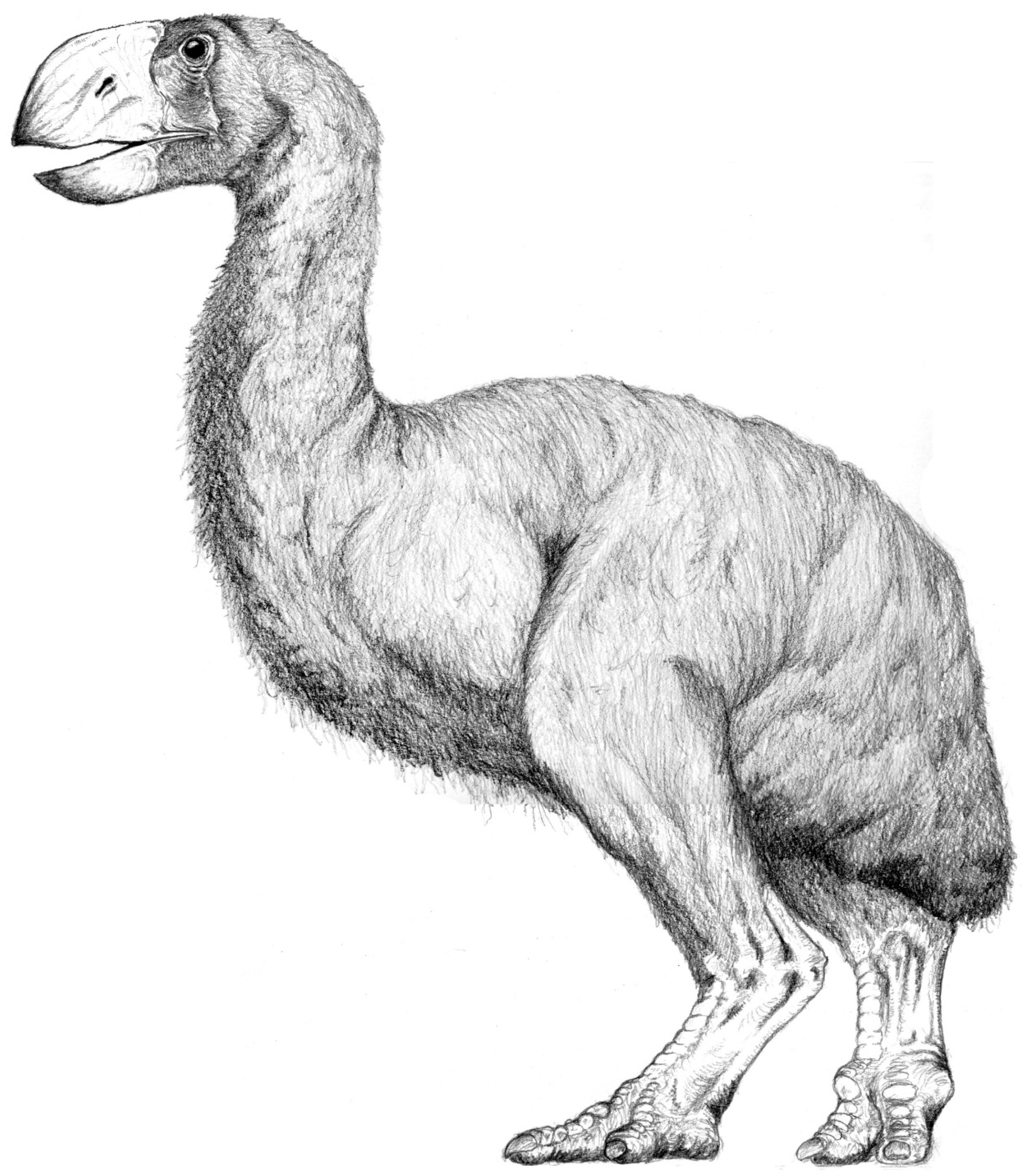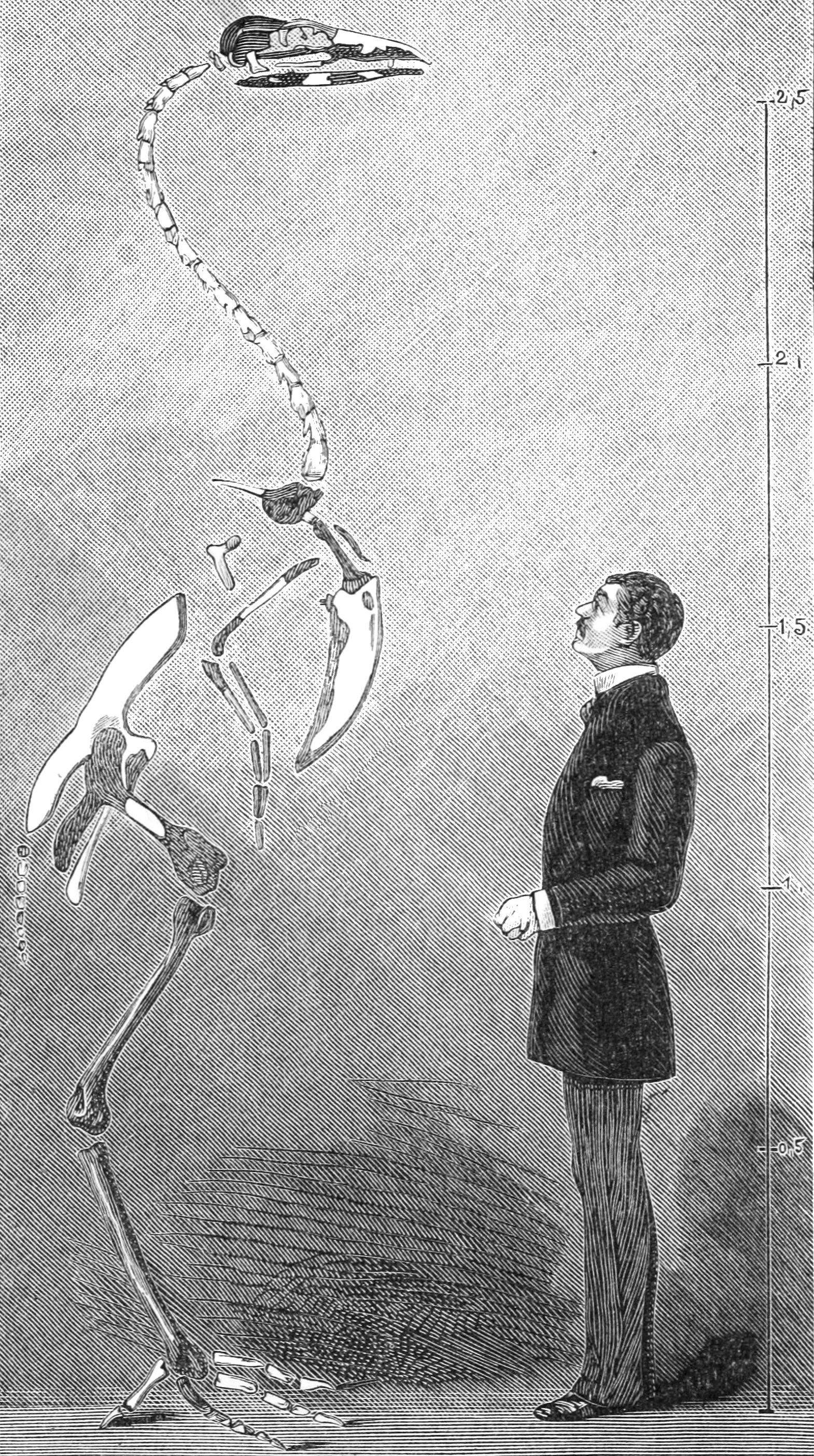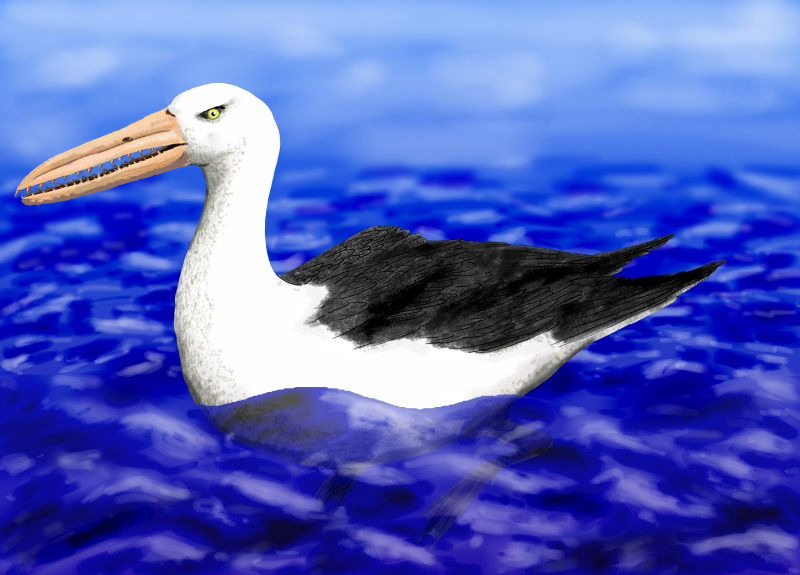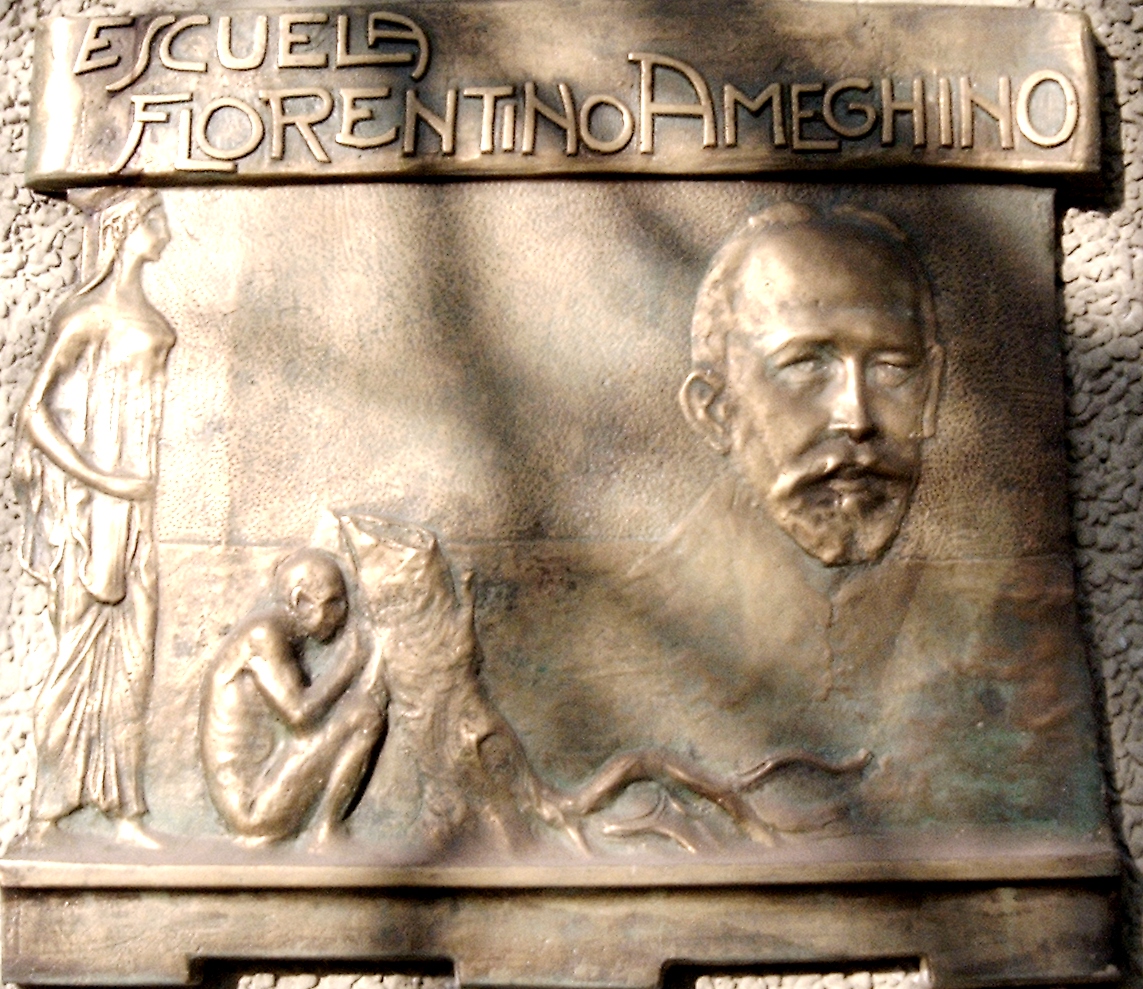|
Brontornis Burmeisteri Life Reconstruction
''Brontornis'' is an extinct genus of giant bird that inhabited Argentina during the Early to Middle Miocene. Its taxonomic position is highly controversial, with authors alternatively considering it to be a cariamiform, typically a phorusrhacid (terror bird) or an anserimorph. Taxonomy The first fossils of ''Brontornis burmeisteri'' were described by paleontologists Francisco Moreno and Alcides Mercerart in 1891, the fossils being a left femur, tibiotarsus, fibula, and tarsometatarsus all from the same individual found in the Lower-Middle Miocene strata of the Santa Cruz Formation in Santa Cruz Province, Argentina.Brodkorb, P. (1967). ''Catalogue of fossil birds: part 3 (Ralliformes, Ichthyornithiformes, Charadriiformes)''. University of Florida. In the same paper, two distal tibiotarsi from the same area were referred to ''Brontornis'' as well.Moreno, F. P., & Mercerat, A. (1891). ''Catálogo de los pájaros fósiles de la República Argentina conservados en el Museo de La ... [...More Info...] [...Related Items...] OR: [Wikipedia] [Google] [Baidu] |
Miocene
The Miocene ( ) is the first epoch (geology), geological epoch of the Neogene Period and extends from about (Ma). The Miocene was named by Scottish geologist Charles Lyell; the name comes from the Greek words (', "less") and (', "new") and means "less recent" because it has 18% fewer modern marine invertebrates than the Pliocene has. The Miocene followed the Oligocene and preceded the Pliocene. As Earth went from the Oligocene through the Miocene and into the Pliocene, the climate slowly cooled towards a series of ice ages. The Miocene boundaries are not marked by distinct global events but by regionally defined transitions from the warmer Oligocene to the cooler Pliocene Epoch. During the Early Miocene, Afro-Arabia collided with Eurasia, severing the connection between the Mediterranean and Indian Oceans, and allowing the interchange of fauna between Eurasia and Africa, including the dispersal of proboscideans and Ape, hominoids into Eurasia. During the late Miocene, the conn ... [...More Info...] [...Related Items...] OR: [Wikipedia] [Google] [Baidu] |
Femoral Head
The femoral head (femur head or head of the femur) is the highest part of the thigh bone (femur The femur (; : femurs or femora ), or thigh bone is the only long bone, bone in the thigh — the region of the lower limb between the hip and the knee. In many quadrupeds, four-legged animals the femur is the upper bone of the hindleg. The Femo ...). It is supported by the femoral neck. Structure The head is globular and forms rather more than a hemisphere, is directed upward, medialward, and a little forward, the greater part of its convexity being above and in front. The femoral head's surface is smooth. It is coated with cartilage in the fresh state, except over an ovoid depression, the fovea capitis, which is situated a little below and behind the center of the femoral head, and gives attachment to the ligament of head of femur. The thickest region of the articular cartilage is at the centre of the femoral head, measuring up to 2.8 mm. The diameter of the femoral hea ... [...More Info...] [...Related Items...] OR: [Wikipedia] [Google] [Baidu] |
Gastornis
''Gastornis'' is an extinct genus of large, flightless birds that lived during the mid-Paleocene to mid-Eocene epochs of the Paleogene period. Most fossils have been found in Europe, and some species typically referred to the genus are known from North America and Asia. Several genera, including the well-studied genus ''Diatryma'', have historically been considered junior synonyms of ''Gastornis''. However, this interpretation has been challenged recently, and some researchers currently consider ''Diatryma'' to be a valid genus. ''Gastornis'' species were very large birds that were traditionally thought to have been predators of various smaller mammals, such as ancient, diminutive equids. However, several lines of evidence, including the lack of hooked claws (in known ''Gastornis'' footprints), studies of their beak structure and isotopic signatures of their bones, have caused scientists to now consider that these birds were probably herbivorous, feeding on tough plant material ... [...More Info...] [...Related Items...] OR: [Wikipedia] [Google] [Baidu] |
Gastornithiformes
Gastornithiformes are an extinct order of giant flightless fowl with fossils found in North America, Eurasia, possibly Australia. Members of Gastornithidae were long considered to be a part of the order Gruiformes. However, the traditional concept of Gruiformes has since been shown to be polyphyletic. Beginning in the late 1980s and the first phylogenetic analysis of gastornithid relationships, consensus began to grow that they were close relatives of the lineage that includes waterfowl and screamers, the Anseriformes. Recognizing the apparent close relationship between ''Gastornis'' and waterfowl, some researchers even classify them within the anseriform group itself. Others restrict the name Anseriformes only to the crown group formed by all modern species, and label the larger group including extinct relatives of anseriformes in the clade Anserimorphae (which this article and related pages have adopted). While the order is generally considered to be monotypic, a 2017 paper ... [...More Info...] [...Related Items...] OR: [Wikipedia] [Google] [Baidu] |
Type Species
In International_Code_of_Zoological_Nomenclature, zoological nomenclature, a type species (''species typica'') is the species name with which the name of a genus or subgenus is considered to be permanently taxonomically associated, i.e., the species that contains the biological Type (biology), type wiktionary:en:specimen, specimen (or specimens). Article 67.1 A similar concept is used for suprageneric groups and called a type genus. In botanical nomenclature, these terms have no formal standing under the International Code of Nomenclature for algae, fungi, and plants, code of nomenclature, but are sometimes borrowed from zoological nomenclature. In botany, the type of a genus name is a specimen (or, rarely, an illustration) which is also the type of a species name. The species name with that type can also be referred to as the type of the genus name. Names of genus and family ranks, the various subdivisions of those ranks, and some higher-rank names based on genus names, have suc ... [...More Info...] [...Related Items...] OR: [Wikipedia] [Google] [Baidu] |
Paraphysornis
''Paraphysornis'' is an extinct genus of giant flightless terror birds that inhabited Brazil during Late Oligocene or Early Miocene epochs. Although not the tallest phorusrhacid, ''Paraphysornis'' measured up to tall at the hips and weighed around . It was also a notably robust bird, having short and robust tarsal bones not suited for pursuit hunting. Discovery and naming The holotype (DGM-1418-R) and only known fossil was discovered by a mining company in the Taubaté Basin (São Paulo State) in a layer of bentonite clay, two or three meters below a layer of Pyrobitumen. These sediments belong to the Late Oligocene to Early Miocene Tremembé Formation. Excavation of the bones took several months between 1977 and 1978, yielding a nearly complete (%75) skeleton only lacking most of the cranium, the pelvis and sternum. The bones were initially studied by Herculano Alvarenga, who first described them in 1982 as a species of '' Physornis''. Following closer examination of various ... [...More Info...] [...Related Items...] OR: [Wikipedia] [Google] [Baidu] |
Physornis
''Physornis'' is an extinct genus of giant flightless predatory birds of the family Phorusrhacidae or "terror birds", most closely related to ''Paraphysornis'', that lived in Argentina. The type species is ''P. fortis''. It lived during the Middle to Late Oligocene (Deseadan). Few fossils are known, but the available material suggests that ''Physornis'' was one of the largest phorusrhacids. History and taxonomy The holotype of ''Physornis'' ( BMNH-A583) is a 137 mm long portion of a symphysis and the right branch of this lower jaw, described in 1894 by paleontologist Florentino Ameghino. He published the name, together with a description but without a drawing, in the same year.Brodkorb, P. (1967). ''Catalogue of fossil birds: part 3 (Ralliformes, Ichthyornithiformes, Charadriiformes)''. University of Florida.Alvarenga, H. M., & Höfling, E. (2003). Systematic revision of the Phorusrhacidae (Aves: Ralliformes). ''Papéis Avulsos de Zoologia'', ''43''(4), 55-91. The fossil was co ... [...More Info...] [...Related Items...] OR: [Wikipedia] [Google] [Baidu] |
Anseriformes
Anseriformes is an order (biology), order of birds also known as waterfowl that comprises about 180 living species of birds in three families: Anhimidae (three species of screamers), Anseranatidae (the magpie goose), and Anatidae, the largest family, which includes over 170 species of waterfowl, among them the ducks, goose, geese, and swans. Most modern species in the order are highly adapted for an aquatic existence at the water surface. With the exception of screamers, males have Penis#Birds, penises, a trait that has been lost in the Neoaves, the clade consisting of all other modern birds except the galliformes and paleognaths. Due to their aquatic nature, most species are web-footed. Evolution Anseriformes are one of only two types of modern bird to be confirmed present during the Mesozoic alongside the other dinosaurs, and in fact were among the very few birds to survive their extinction, along with their cousins, the Galliformes. These two groups only occupied two ecologic ... [...More Info...] [...Related Items...] OR: [Wikipedia] [Google] [Baidu] |
Brontornis Burmeisteri Life Reconstruction
''Brontornis'' is an extinct genus of giant bird that inhabited Argentina during the Early to Middle Miocene. Its taxonomic position is highly controversial, with authors alternatively considering it to be a cariamiform, typically a phorusrhacid (terror bird) or an anserimorph. Taxonomy The first fossils of ''Brontornis burmeisteri'' were described by paleontologists Francisco Moreno and Alcides Mercerart in 1891, the fossils being a left femur, tibiotarsus, fibula, and tarsometatarsus all from the same individual found in the Lower-Middle Miocene strata of the Santa Cruz Formation in Santa Cruz Province, Argentina.Brodkorb, P. (1967). ''Catalogue of fossil birds: part 3 (Ralliformes, Ichthyornithiformes, Charadriiformes)''. University of Florida. In the same paper, two distal tibiotarsi from the same area were referred to ''Brontornis'' as well.Moreno, F. P., & Mercerat, A. (1891). ''Catálogo de los pájaros fósiles de la República Argentina conservados en el Museo de La ... [...More Info...] [...Related Items...] OR: [Wikipedia] [Google] [Baidu] |
Phorusrhacos
''Phorusrhacos'' ( ) is an extinct genus of giant flightless bird, flightless terror birds that inhabited South America during the Miocene epoch. ''Phorusrhacos'' was one of the dominant land predators in South America at the time it existed. It is thought to have lived in woodlands and grasslands. Discovery and naming Remains are known from several localities in the Santa Cruz Formation and Monte León Formation in Santa Cruz Province (Argentina), Santa Cruz Province, of Argentina. Among the bones found in the strata of the Santa Cruz Formations (now considered as mainly of mid-Miocene date) was the piece of a mandible which Florentino Ameghino discovered in early 1887 and the same year at first described as that of an edentate mammal which he named ''Phorusrhacos longissimus''. The generic name is derived from Greek -φόρος, (-''phoros''), an element meaning "bearer" in word combinations, and ῥάκος, (''rhakos''), "rag" or "wrinkle", probably in reference to the w ... [...More Info...] [...Related Items...] OR: [Wikipedia] [Google] [Baidu] |
Florentino Ameghino
Florentino Ameghino (born Giovanni Battista Fiorino Giuseppe Ameghino; September 19, 1853 – August 6, 1911) was an Argentine naturalist, paleontologist, anthropologist and zoologist, whose fossil discoveries on the Argentine Pampas, especially on Patagonia, rank with those made in the western United States during the late 19th century. Along with his two brothers – Carlos and Juan – Florentino Ameghino was one of the most important founding figures in South American paleontology. From 1887 until his death, Ameghino was passionately devoted to the study of fossil mammals from Patagonia, with the valuable support of his brother Carlos Ameghino (1865–1936) who, between 1887 and 1902, made 14 trips to that region, where he discovered and collected numerous fossil faunas and made important stratigraphic observations. Biography Ameghino was born on September 19, 1853, in Tessi, an hamlet of Moneglia, a municipality of Liguria in Italy, in what was then the Kingdom of Sardi ... [...More Info...] [...Related Items...] OR: [Wikipedia] [Google] [Baidu] |
Monte León Formation
Monte may refer to: Places Argentina * Argentine Monte, an ecoregion * Monte Desert * Monte Partido, a ''partido'' in Buenos Aires Province Italy * Monte Bregagno * Monte Cassino * Montecorvino (other) * Montefalcione Portugal * Monte (Funchal), a civil parish in the municipality of Funchal * Monte, a civil parish in the municipality of Fafe * Monte, a civil parish in the municipality of Murtosa * Monte, a civil parish in the municipality of Terras de Bouro Elsewhere * Monte, Haute-Corse, a commune in Corsica, France * Monte, Switzerland, a village in the municipality Castel San Pietro, Ticino, Switzerland * Monte, U.S. Virgin Islands, a neighborhood * Monte Lake, British Columbia, Canada Arts, entertainment, and media * ''Monte'' (film), a 2016 drama film by Amir Naderi * Three-card Monte * Monte Bank or Monte, a card game Other uses * Monte (dessert) a milk cream dessert produced by the German dairy company Zott * Monte (mascot), the mascot of the University ... [...More Info...] [...Related Items...] OR: [Wikipedia] [Google] [Baidu] |








